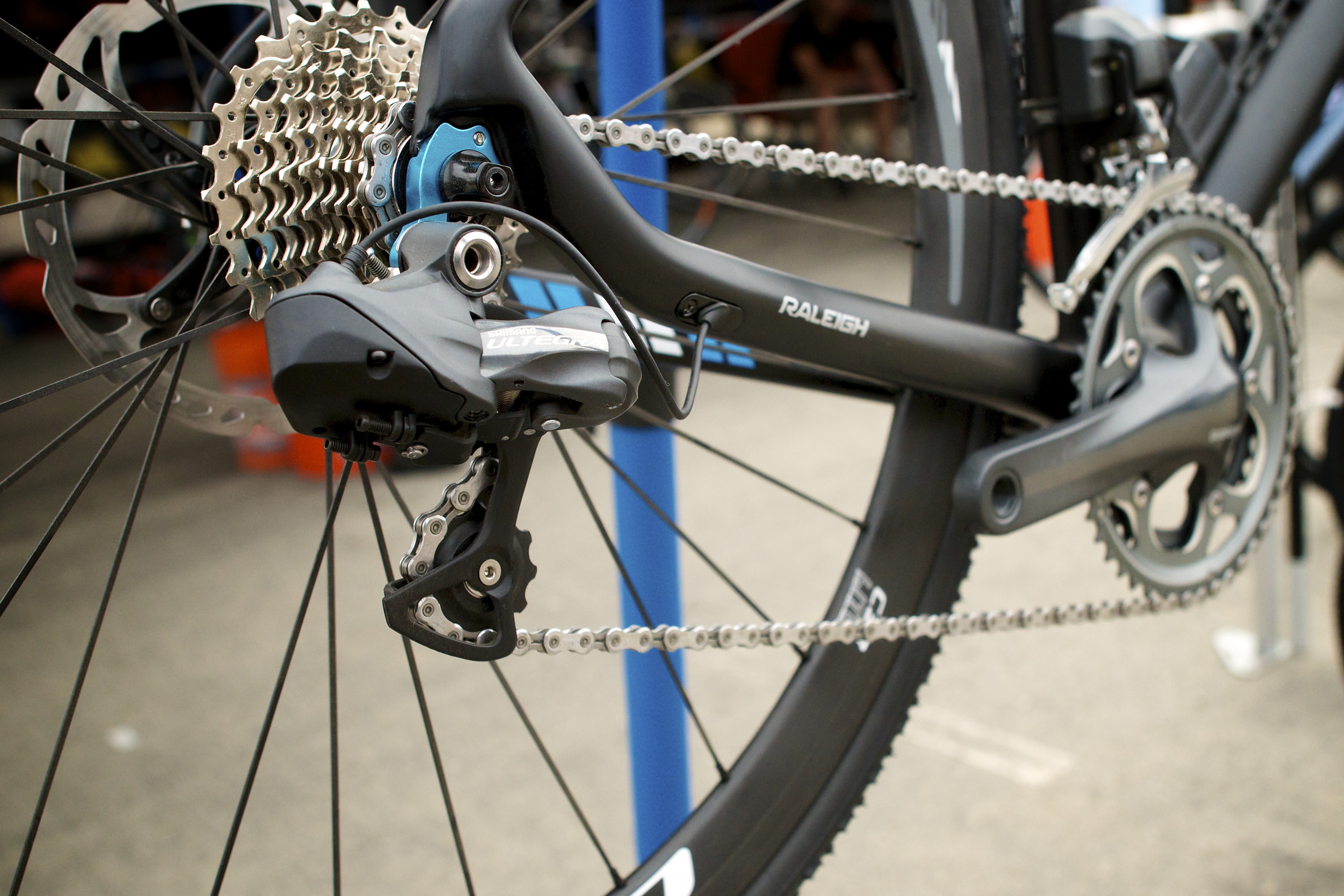
Replaceable Derailleur Hanger
As a mechanic for almost two decades, I have seen numerous developments in bike hardware, but I try to keep a perspective that transcends the the latest “innovation” announced by corporate marketing departments. A view that accommodates the gripes of non-tech consumers without losing sight of why a product is built the way it is. A bicycle isn’t as complex as an aircraft, but that doesn’t mean that top quality equipment doesn’t require a learning curve.
By the 1950s, derailleurs had more less become an expected feature of road bikes, and the derailleur manufacturers more or less agreed to mount the derailleurs into a threaded eye formed into the lower edge of the right dropout, as epitomized by the Campagnolo #1010 dropout. This dropout, like most at the time, was formed of stamped (forged ) steel. It was a strong, tough piece, but if bent in the event of a crash, it could almost always be realigned, though maybe it would not endure multiple manipulations. Decades later as aluminum frames became popular, the alloy dropouts were proving to be less tolerant of bending, sometimes snapping clean off the dropout during realignment. An alloy frame with a broken deralleur hanger was essentially ruined, since a new dropout could not be simply brazed in. For carbon fibre frames, either the dropout is an alloy piece bonded into the carbon frame, or the dropout is moulded from carbon fibre and requires some sort of metal hanger anyways, for the derailleur to thread into.
The solution seemed simple enough: a replaceable derailleur hanger that could be aligned without consequence. Even if the hanger snapped, a new one could be fitted. In fact, if the hanger was designed such that it preferentially bent before the frame suffered any damage, so much the better. This is especially true of carbon fibre frames. However, the derailleur hangers one typically finds on a stock bike bend like butter. I pretty much assume that every brand new bike that I pull out of a box has a bent hanger. And when I thread an alignment tool onto a replaceable hanger, it is shocking how easy it is to bend the one compared to an old forged steel dropout. Inattentive cyclists can easily bend a hanger just putting a bike into the boot of a car; a racing cyclist can easily bend a hanger in any kind of fall.
So what is the big deal of a bent hanger? The worst that could happen is that an inward bent hanger allows the inboard derailleur cage plate to catch on the rear wheel’ spokes as the rider shifts into the biggest cog. Then the rider’s movement on the bike gives the wheel enough torque to perhaps rip the derailleur apart and wrap the chain around the cassette. It is in just such a scenario as this that the replaceable hanger fulfills its purpose, since no hanger made of aluminum could likely survive that much twisting and distortion. However, in order for this to happen, the hanger must first be bent inward and then the rider must ride without noticing. If the hanger was stouter, chances are good that the hanger wouldn’t have gotten bent in the first place, or alternately the inciting event for bending the hanger would have to be a lot more dramatic.
The more common problem with bent derailleur hangers is that indexed shifting systems require the hanger to be parallel to the plane of the rear wheel. If not, then the lateral distance per shift that the derailleur moves the chain will be less than the exact cog-to-cog spacing. Consequently, the system loses shifting accuracy, often at one end or the other of the cassette range. Perhaps, the misalignment is great enough that shifting will obviously be off, that the derailleur consistently misbehaves. That situation is one in which getting the derailleur caught in the spokes is a vulnerability too, but there are usually warning signs in the form of dismal shifting. More frequently, the shifting is just a little bit off, or varies depending on how hard the rider is pedaling. Oft times not even an expert eye can see the bend without the aid of an alignment tool, and maybe the bike doesn’t misbehave when running through the gears while it’s on a workstand. Certainly there are no tool roll-sized derailleur aligners to fix the problem in the field. Without knowing the hanger is bent, the shifting issues could be plausibly due to any of a dozen other maladies.
Over the years as indexed shifting systems have moved from 6sp to the current 11sp, the cog-to-cog spacing is almost half of what it once was. That means that less angle of misalignment is required before a bent hanger creates some sort of shifting problem. Every time Shimano and Campagnolo add another cog to the cluster, the situation gets worse.
So why are replaceable hangers so easily bent? They are typically made from relatively low strength aluminium that is more suited to high volume manufacturing (most likely casting or perhaps hot-forging) . Since strength and elongation (ductility) are often inversely related in various alloys, this means that the hangers are less likely to crack when bent and are tolerant of being manipulated multiple times without snapping (even if they don’t break, it is not uncommon that a hanger can be so warped from getting caught in the spokes that it can’t be straightened properly). One would think that stiffer, stronger derailleur hangers would be a good thing. In fact, top-level professional teams often get custom hangers made from stronger 7000-series aluminium, stainless steel, or even titanium. Several manufacturers also supply their sponsored teams with framesets with non-replaceable hangers; the philosophy being that consistent shifting and improved single-crash toughness is more important than long-term frame survivability. For the rest of us, we will just have to be especially careful of the right rear quarter of our bikes.
It would be a nightmare if you could only get hangers from the bike companies. Other than Trek and a few other huge bike brands, most bike companies are in the business of selling complete bikes, so aftermarket parts are afterthoughts. So other companies, particularly Wheels Manufacturing, have stepped into the role of supplying replacement hangers to shops and parts distributors, but the sheer number of variations is reaching ridiculous levels. Wheels Manufacturing alone lists about 200 individual sku numbers. This makes ordering the correct replacement hanger difficult, especially in a situation when the consumer brings an incomplete, broken hanger and the model year of the bike is unknown. Like that, it is virtually impossible to order the correct hanger without internet access and a pool of knowledge deep enough to be able to infer the model year of a frame from that of its components. On an older bike, that might also mean being able to guess which components are original in the first place.
Even if you have a spare hanger or can get one from online, you would still be well-advised to have it installed by a competent shop because you can’t assume that the new hanger will be perfectly parallel to the wheel after simply being bolted onto the frame. Sometimes the frame’s interface can be a little warped, or maybe neither the frame nor the hanger have tolerances that tight. You really do need that hanger alignment tool even with a new hanger.
Another extremely annoying situation that I’ve recently met with some frequency is when the replacement derailleur hanger doesn’t quite fit the intended bike. It’s necessary to reshape the piece, but it easily adds 10-15 minutes to the duration of the repair. Hey, I’m no slouch at these kind of things, and I’m lucky enough to work for a retailer with a full frame building operation on-site. I have access to a variety of files and belt sanders. It not with arrogance that I suspect that most mechanics would require more time to do the same job. I don’t really know why certain Wheels Manufacturing replacement hangers are off, but I suspect that the forged or cast original hangers have rounded corners as opposed to the sharper edges from CNC machined copies.
All this isn’t to say that you’d be free of hanger headaches if you had a steel frame. While steel dropouts are were typically made from forged material, a number of bike brands are using cast units on their steel bikes. Though not as wussy as the majority of replaceable aluminium hangers, I’ve seem some get hella bent. I’ve most frequently seen this occur on Lemonds and Bianchis. On the plus side, I have yet to snap off a hanger during alignment, but I’m little uncomfortable guessing their life expectancy after bringing those hangers back from such dramatic bend.
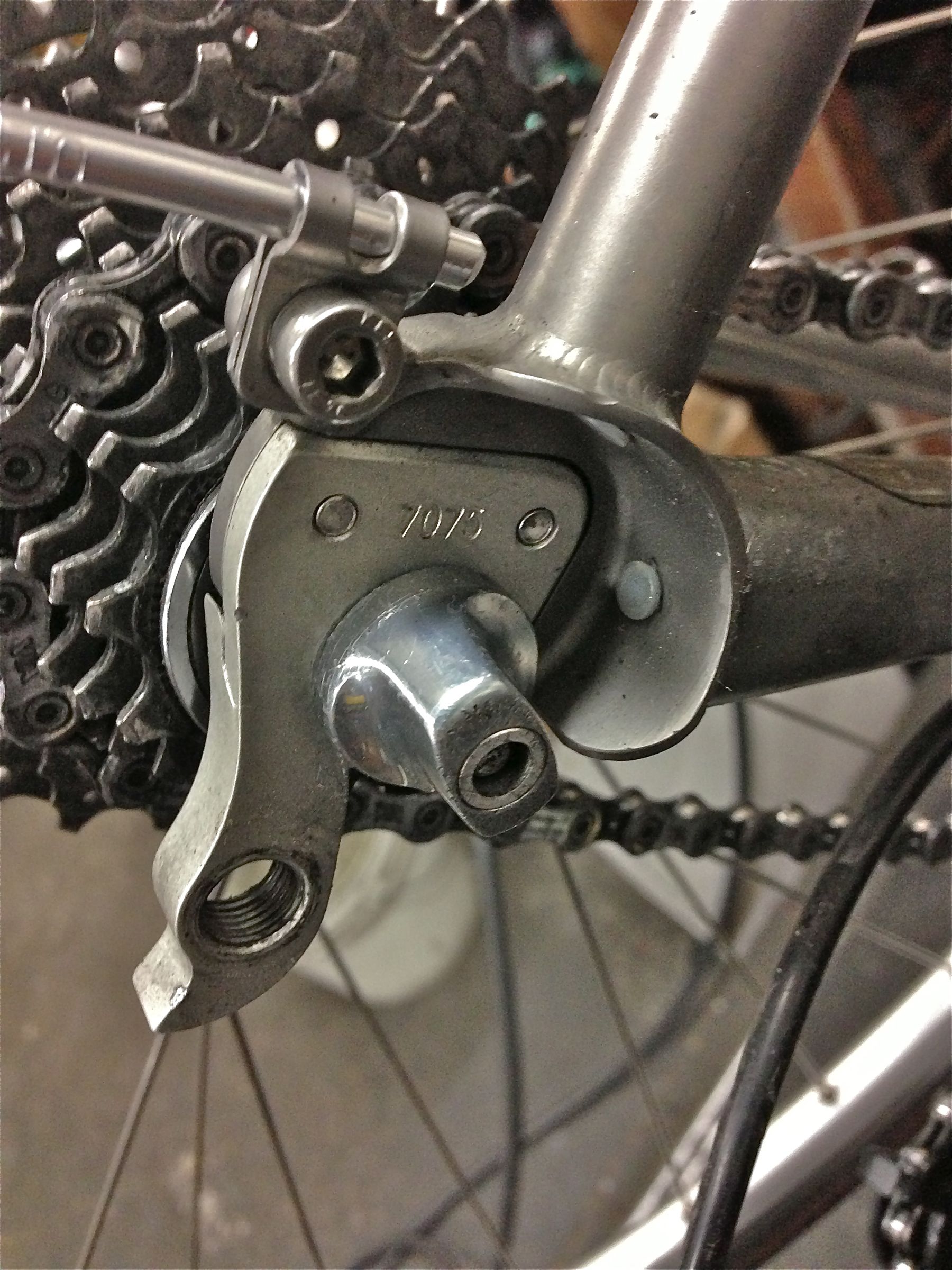

High-strength, 7000-series replaceable hanger. Notice the crack, whereas a softer alloy hanger would have bent.
Wheels Manufacturing replacement hanger, original condition.
I begin to reshape the hanger and after many small adjustments….
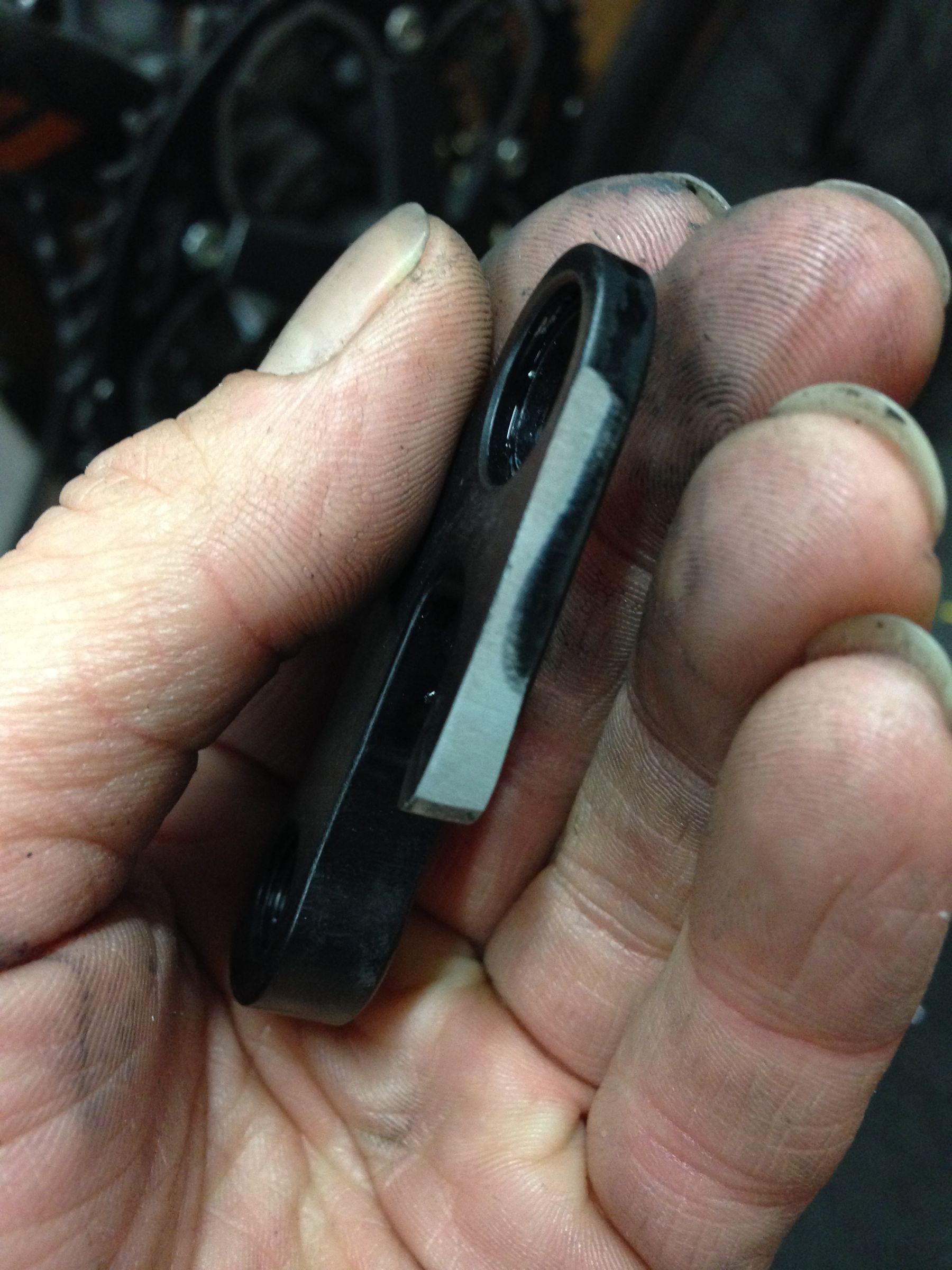
…finally it fits
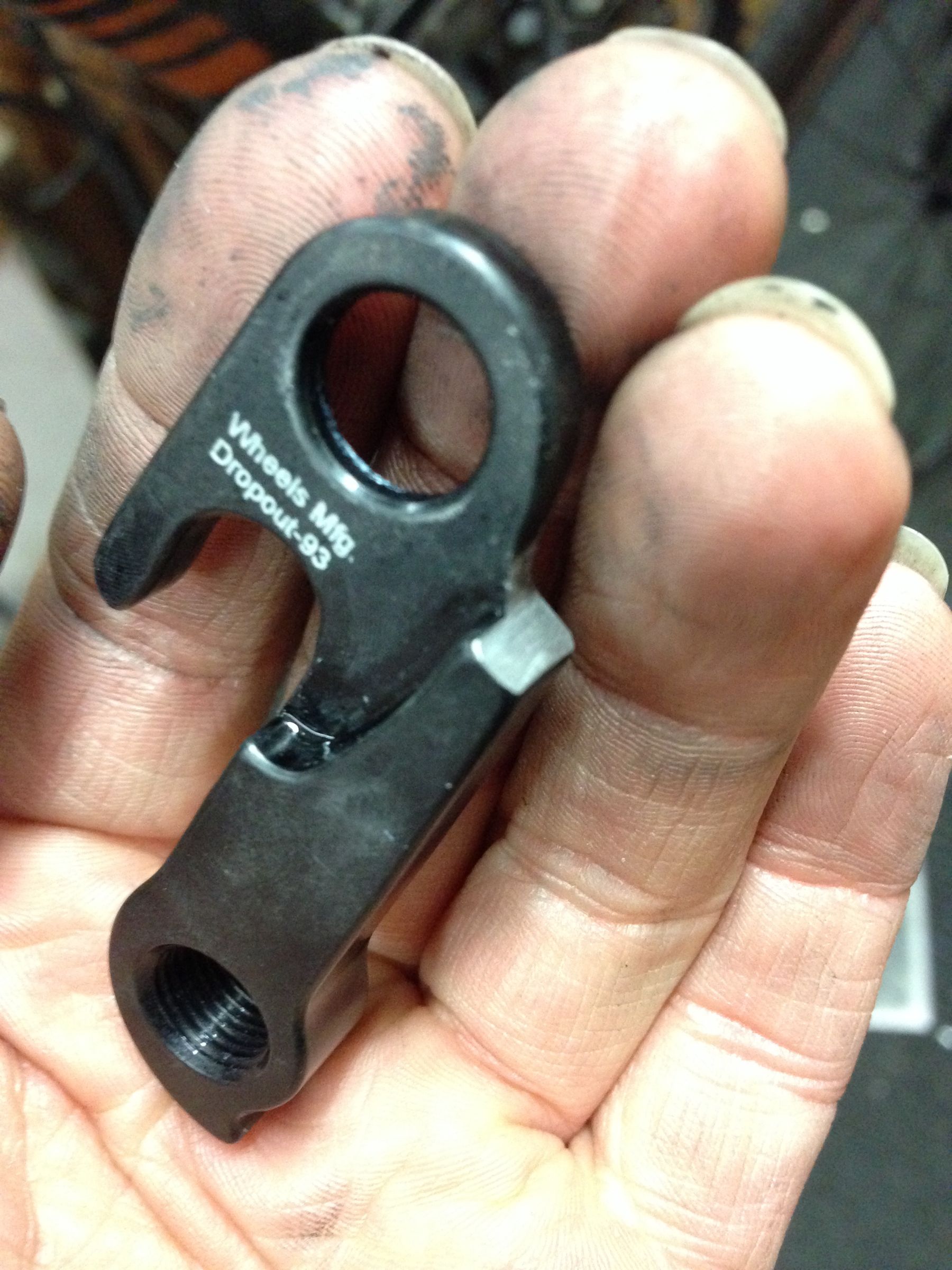
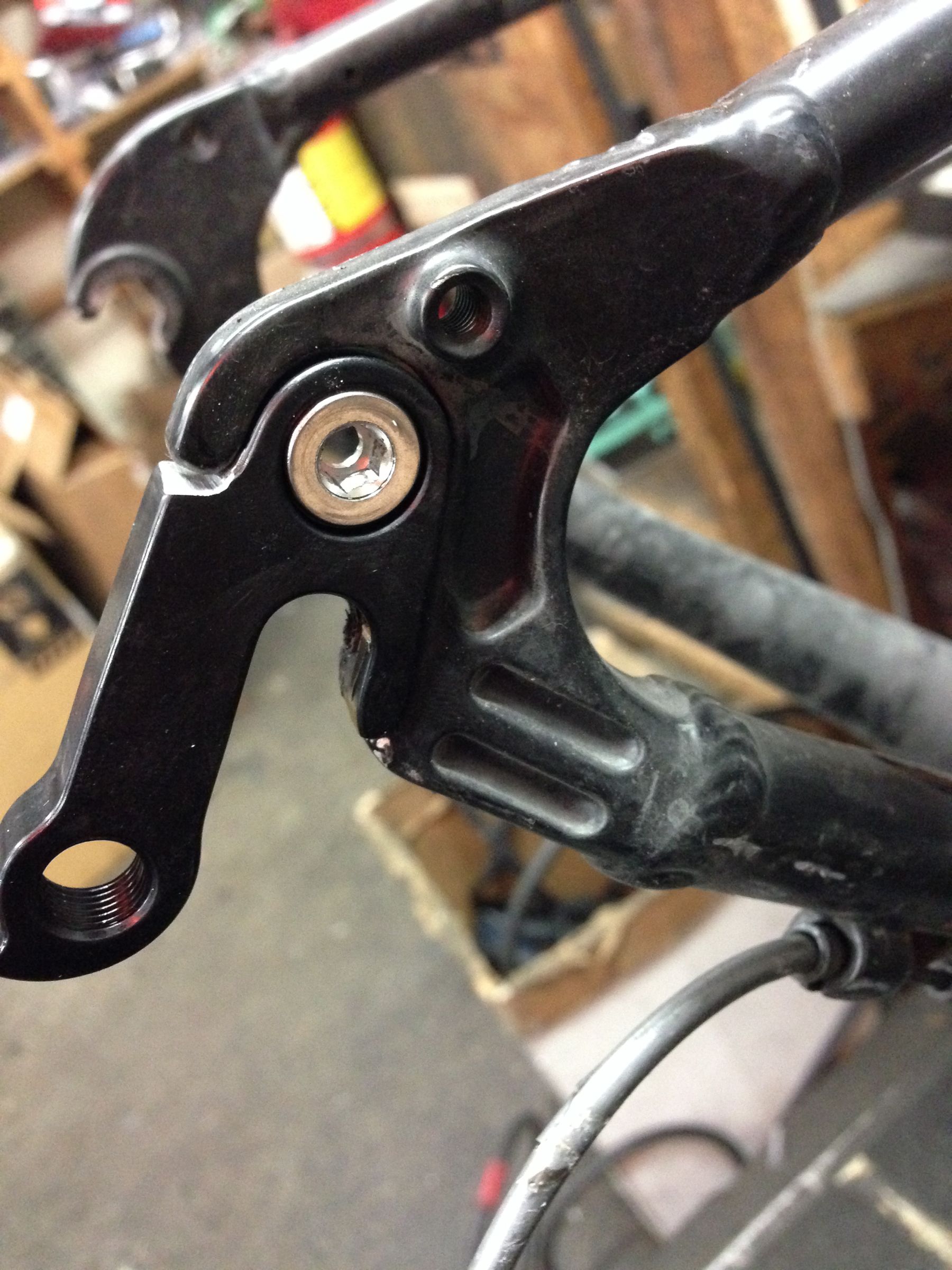
Cast steel hanger on a Lemond. Derailleur had gotten caught in the rear wheel, probably initiated by the hanger being bent only slightly.
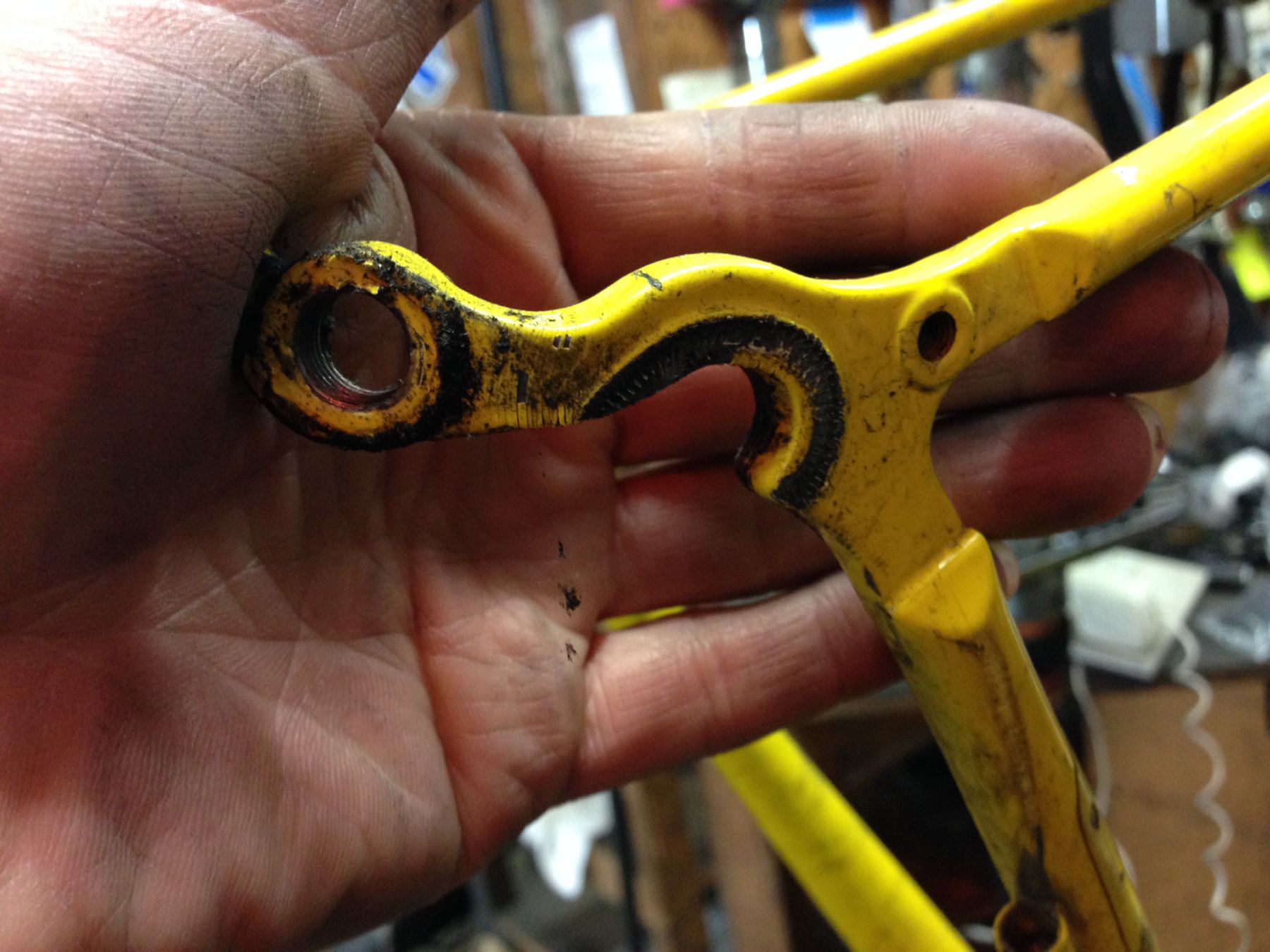
Cast steel hanger after alignment. Notice the cracked paint after the hanger was re-bent
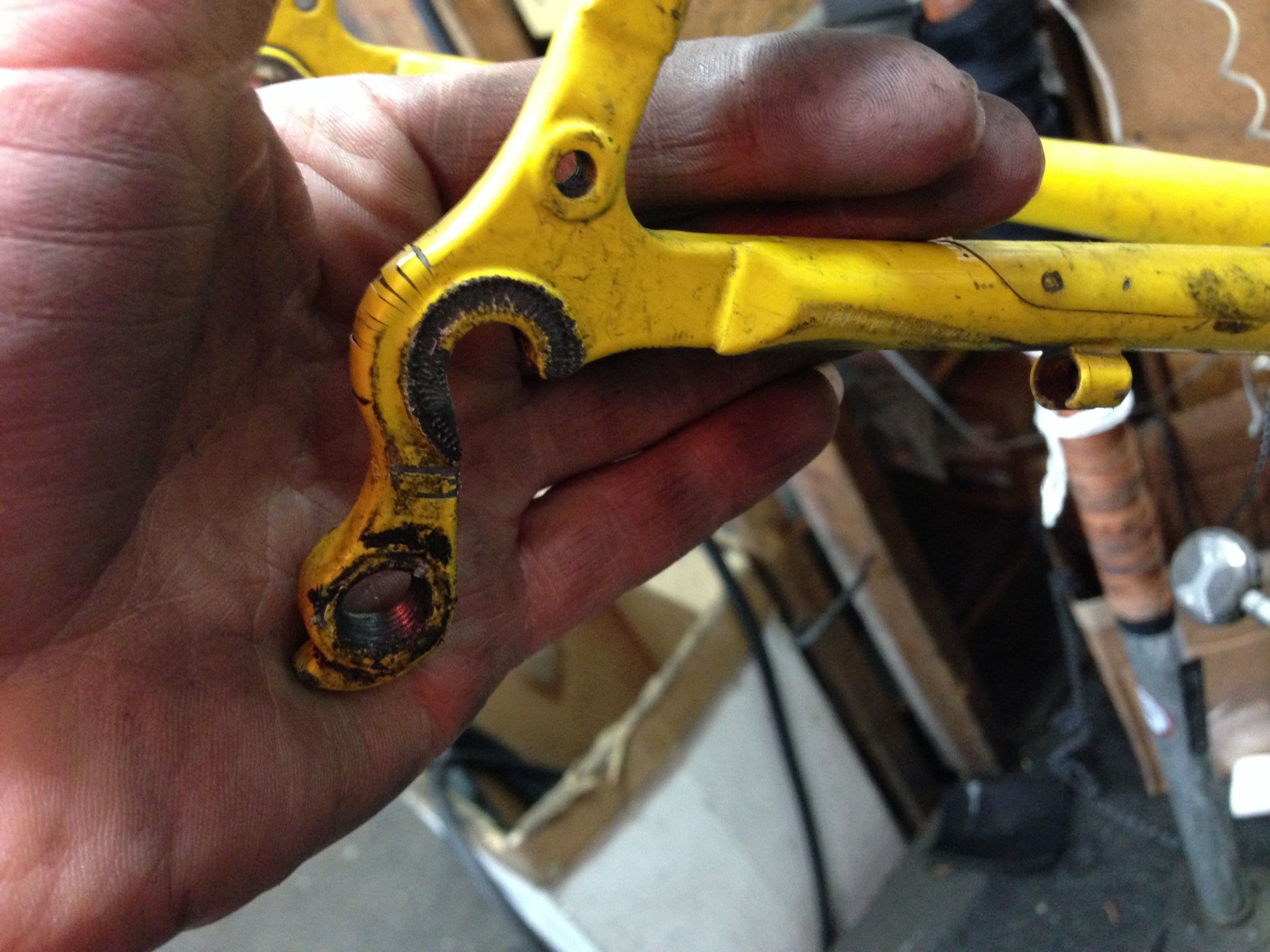
We're riding townies, adventure, and mountain bikes. Find recommendations on our store page. As Amazon Associates we earn from qualifying purchases.